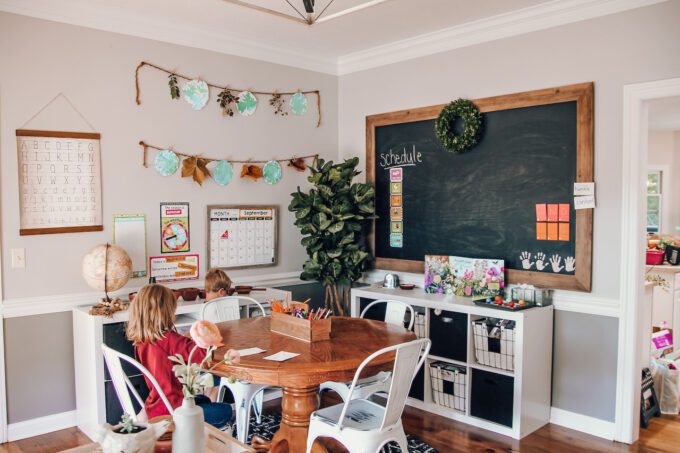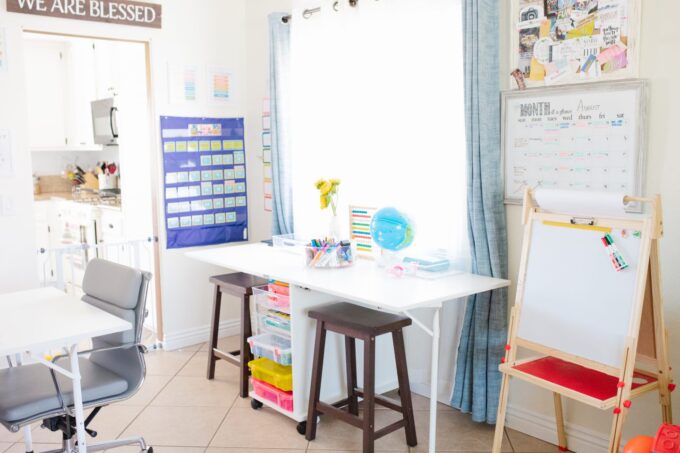Parents pull nearly 2 million children out of traditional classrooms every year in the U.S. alone. Most don’t regret the choice. But many say they weren’t ready for the pressure. Is it the right path for your child? The answer isn’t one-size-fits-all. Some families thrive. Others burn out. Let’s get clear on what actually works.
Is Homeschooling Right for Your Kids?
The answer depends on three things: your goals, your capacity, and your child’s needs. Homeschooling can open doors. It can also introduce daily conflict, academic gaps, and emotional stress. If it works, it works well. If it doesn’t, it unravels fast.
Families who succeed with homeschooling usually combine flexibility and structure. They build their schedule around natural rhythms and support it with strong resources. Private tutors, online programs, or group pods bring professional help into the home.
Others fail because they underestimate the workload or try to do everything alone. The key is not perfection—it’s balance. If your child’s curiosity leads the way and you stay organized, your chances improve. But you’ll still need patience, stamina, and backup.
Benefits That Attract Parents to Homeschooling
Homeschooling appeals to many families who feel traditional systems fall short. Some want more challenge. Others want less pressure. Either way, the shift allows parents to take the reins.
One major advantage lies in academic customization. Every child learns differently. Homeschooling lets parents pause on difficult topics and fast-track others. That leads to mastery, not just memorization.
Families also report closer relationships. More shared time means more connection. That creates stronger bonds and better emotional safety. School becomes personal.
Another benefit is protection. Children avoid exposure to bullying, peer pressure, and social labeling. Without constant comparison, confidence can grow. Parents say they finally see their child’s real personality.

Source: drjamesdobson.org
Real Challenges Parents Must Prepare for
Homeschooling brings flexibility, but it also introduces new stress. Many parents face emotional burnout early. Teaching at home removes separation between roles. You no longer switch off between parent and teacher. That constant overlap creates fatigue.
Financial pressure hits hard, too. Materials, tutors, and enrichment classes add up. Some parents reduce their work hours or stop working completely. That choice affects household income and long-term savings.
Social development can suffer if families isolated. Without daily contact with peers, children miss group dynamics. Emotional regulation, teamwork, and boundaries must be built elsewhere. That takes planning. It can’t happen by accident.
The model works—but only with clarity, help, and honest limits.
Who Thrives Most in a Homeschool Setup
Not every child adapts well to homeschooling, but some flourish. Children with learning differences, such as dyslexia or ADHD, benefit from reduced noise and pressure. They can take breaks, control their pace, and use specialized materials. That lowers stress and boosts focus.
Gifted learners also do well. Standard classrooms often slow them down. Homeschooling lets them explore deeper, tackle higher-level work, and move at their own speed. They stay engaged.
Children who show curiosity and self-direction often thrive too. They ask big questions, start projects on their own, and enjoy quiet concentration. Those traits match well with flexible home learning models.
The fit matters more than the format.

Source: fuelingmamahood.com
When Homeschooling Can Backfire
No rhythm means no progress. Some families lose focus early. Late starts, missed lessons, and chaos create a downward spiral. Children crave routine—even flexible ones.
Another pitfall is weak subject knowledge. Parents who lack confidence in math or science may pass that uncertainty onto their child. Mistakes compound over time. That limits future success.
Resistance can also break the system. Not every child wants to stay home. Some crave busy classrooms and constant energy. If you ignore those cues, behavior issues rise. So does emotional withdrawal.
A successful homeschool requires more than love. It needs structure, expertise, and awareness. Miss one? The model collapses.
What It Costs to Homeschool Effectively
Cost catches many families off guard. They assume homeschooling will be cheap. It rarely is. Done well, it demands investment.
Expect annual expenses to include:
- Curriculum and books: $500 to $1,200
- Educational platforms: $200 to $400
- Enrichment classes or clubs: $500 to $1,000
- Private tutors or specialists: $2,000 to $6,000
- Travel or educational field trips: $300 to $1,000
Total: $3,500 to $9,600 per year.
Some families reduce costs by forming pods, sharing tutors, or trading subject help. Still, one parent often steps back from work. That lost income adds hidden weight. It’s not just about the budget. It’s about long-term math.

Source: mammabearsays.com
When to Switch Back to Traditional School
Homeschooling isn’t permanent. It’s a choice—not a contract. If the signs point to stress, don’t ignore them. Transitioning back to school doesn’t mean you failed. It means you adjusted.
Warning signs include loneliness, stalled progress, or rising tension at home. If one parent’s reduced income becomes a burden, it may no longer be sustainable.
Before re-entry, gather records. Schools may require transcripts or placement tests. Keep detailed logs of subjects, hours, and materials. That smooths the process.
Most children adapt well after returning. The key is preparation—not panic.
How to Make It Work if You Decide to Homeschool
Success comes from planning, not passion alone. A few smart habits shape a strong foundation. Start with a reliable daily schedule. It doesn’t have to mimic school hours. It just needs rhythm.
Set goals for each semester. Break them into weekly tasks. Adjust based on feedback, not emotion. Children respond well to structure paired with autonomy.
Don’t isolate. Use public libraries, museums, or coworking spaces. Variety keeps learning fresh. Boredom leads to resistance.
Mix formats. Rotate between books, videos, interviews, and hands-on labs. One format will never serve every topic well.
Outsource when needed. No one masters every subject. Hire tutors or coaches for areas that feel weak.
Final Thoughts
Homeschooling offers freedom, but it demands responsibility. Some families thrive. Others crack under the weight. It’s not a shortcut. It’s a lifestyle shift.
Alignment matters more than perfection. If your child wants space and you can provide time, tools, and patience, the outcome can be powerful. But forcing the model without the right support backfires.
Every child deserves consistency, care, and intellectual challenge. Those elements exist in different systems. Don’t chase trends. Focus on fit.
Your job isn’t to prove a point. It’s to build a life where your child can grow, learn, and feel safe. Start there. Adjust when needed. That’s how you win.







